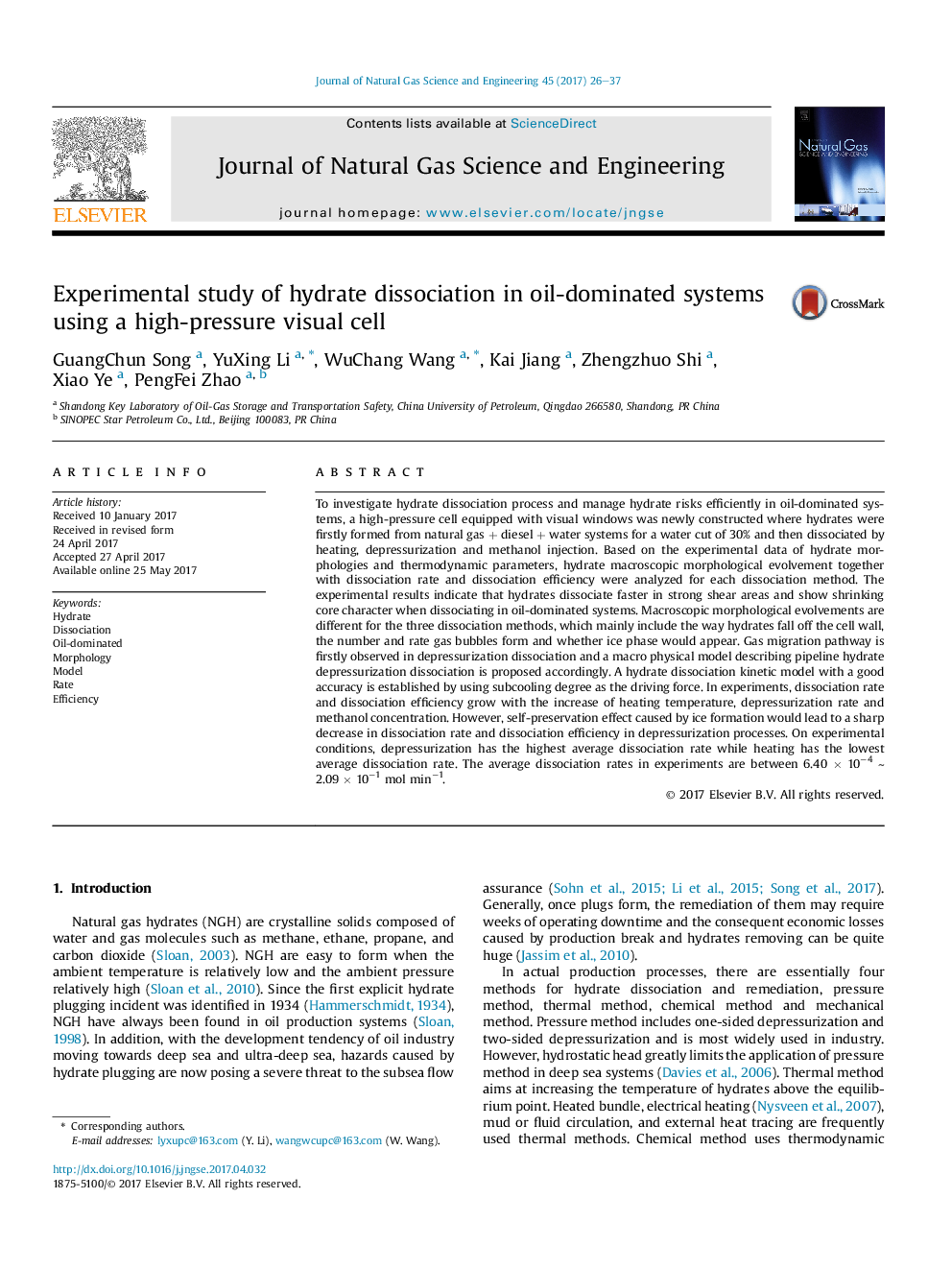| Article ID | Journal | Published Year | Pages | File Type |
|---|---|---|---|---|
| 5485004 | Journal of Natural Gas Science and Engineering | 2017 | 12 Pages |
Abstract
To investigate hydrate dissociation process and manage hydrate risks efficiently in oil-dominated systems, a high-pressure cell equipped with visual windows was newly constructed where hydrates were firstly formed from natural gas + diesel + water systems for a water cut of 30% and then dissociated by heating, depressurization and methanol injection. Based on the experimental data of hydrate morphologies and thermodynamic parameters, hydrate macroscopic morphological evolvement together with dissociation rate and dissociation efficiency were analyzed for each dissociation method. The experimental results indicate that hydrates dissociate faster in strong shear areas and show shrinking core character when dissociating in oil-dominated systems. Macroscopic morphological evolvements are different for the three dissociation methods, which mainly include the way hydrates fall off the cell wall, the number and rate gas bubbles form and whether ice phase would appear. Gas migration pathway is firstly observed in depressurization dissociation and a macro physical model describing pipeline hydrate depressurization dissociation is proposed accordingly. A hydrate dissociation kinetic model with a good accuracy is established by using subcooling degree as the driving force. In experiments, dissociation rate and dissociation efficiency grow with the increase of heating temperature, depressurization rate and methanol concentration. However, self-preservation effect caused by ice formation would lead to a sharp decrease in dissociation rate and dissociation efficiency in depressurization processes. On experimental conditions, depressurization has the highest average dissociation rate while heating has the lowest average dissociation rate. The average dissociation rates in experiments are between 6.40 Ã 10â4 â¼ 2.09 Ã 10â1 mol minâ1.
Keywords
Related Topics
Physical Sciences and Engineering
Earth and Planetary Sciences
Earth and Planetary Sciences (General)
Authors
GuangChun Song, YuXing Li, WuChang Wang, Kai Jiang, Zhengzhuo Shi, Xiao Ye, PengFei Zhao,
